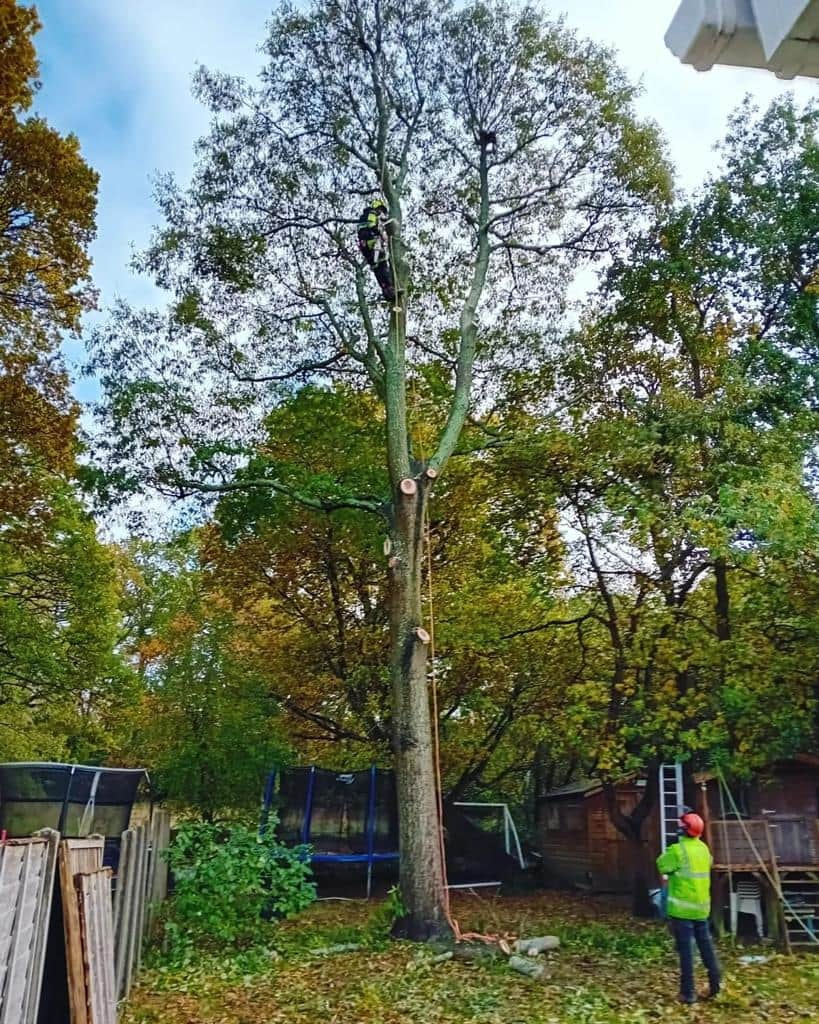Urban trees play a crucial role in enhancing the aesthetic value of cities and towns, providing shade, improving air quality, and offering a habitat for wildlife. However, as trees grow in urban environments, they can also present unique challenges. One of the most effective ways to manage these challenges is through a process known as crown reduction. Crown reduction helps to maintain the health and safety of trees while ensuring they continue to thrive in limited space. In this blog post, we’ll explore the importance of crown reduction for urban trees, balancing their size and safety, and how professional tree surgery services can help achieve this delicate balance.
1. What Is Crown Reduction?
Crown reduction is a tree surgery technique that involves reducing the size of a tree’s canopy while maintaining its natural shape. This process is carried out by selectively removing the outermost branches of the tree, focusing on the top and sides of the crown. The goal is to reduce the tree’s overall height and spread, making it more manageable without causing harm to the tree’s health or structure.
In urban environments, where trees often grow in confined spaces with limited access to resources, crown reduction can be an essential practice for ensuring the tree’s continued health and reducing the risk of damage to surrounding infrastructure or property.
2. Why Is Crown Reduction Important for Urban Trees?
Urban areas present a variety of challenges for trees, including limited space, pollution, and exposure to strong winds. Crown reduction plays a vital role in ensuring that trees remain safe, healthy, and well-suited to their environment.
2.1 Maintaining Safety in Confined Spaces
In densely populated urban areas, trees may grow close to buildings, power lines, roads, or footpaths. As trees grow larger, their branches can become a hazard, posing a risk of damage to property or injury to people. Overhanging branches can cause obstructions, block light, or even lead to accidents during storms or high winds. By reducing the size of the tree’s crown, crown reduction reduces the likelihood of branches breaking or falling, ensuring a safer environment for both residents and property owners.
2.2 Improving Tree Health
Urban trees often face environmental stressors such as pollution, compacted soil, and a lack of space for root growth. In these conditions, a tree’s ability to transport nutrients and water to its branches can be compromised. Crown reduction helps to balance the tree’s energy needs by removing excess growth that may be difficult for the tree to sustain in such conditions. This ensures that the remaining canopy is healthier and more manageable, improving the overall health and longevity of the tree.
2.3 Encouraging Better Light and Airflow
In urban areas where space is limited, trees that are allowed to grow unchecked can block sunlight from reaching surrounding plants, gardens, or even buildings. Crown reduction can help to open up the canopy, allowing light to filter through and promoting better airflow around the tree. This benefits the tree itself and the plants and structures nearby, encouraging a healthier environment for all.
3. How Professional Tree Surgery Helps Achieve the Right Balance
While crown reduction can be highly beneficial, it is a precise task that requires professional expertise. Tree surgeons with experience in urban tree care understand how to safely reduce a tree’s crown without causing long-term damage. They assess the tree’s health, structure, and surrounding environment to ensure the right amount of reduction is carried out.
3.1 Proper Techniques and Tools
Crown reduction is a delicate procedure that requires the right techniques and tools. Professional tree surgeons use specialised equipment, such as pruning saws and pole pruners, to remove branches cleanly and effectively. They are also skilled in making the right cuts that encourage healthy regrowth and prevent the tree from becoming weak or unbalanced after the reduction.
3.2 Understanding Tree Species and Growth Patterns
Different tree species have unique growth patterns and characteristics. An experienced tree surgeon understands how each species responds to crown reduction and can tailor their approach accordingly. This ensures that the tree’s natural shape is maintained and that it continues to grow in a healthy manner, avoiding problems like dieback or structural weakness.
3.3 Minimising Stress on the Tree
Crown reduction can be stressful for a tree, especially if performed incorrectly. A professional tree surgeon will ensure that the reduction is done gradually and with care to minimise stress and avoid over-pruning. This ensures the tree’s long-term health and reduces the risk of it becoming vulnerable to diseases or pests.
4. Conclusion
Crown reduction is an essential practice for managing urban trees, helping to balance their size with the need for safety and healthy growth. In cities and towns where space is limited, trees must be carefully maintained to prevent them from becoming a hazard or overstretching the resources available to them. By opting for professional tree surgery services, you can ensure that your trees remain healthy, safe, and well-suited to their environment.
If you’re in the South Cerney area and have concerns about the health or safety of your trees, contact EM Tree Surgery South Cerney today. Our skilled tree surgeons specialise in crown reduction and other tree care services to help you maintain the beauty and safety of your trees for years to come. Get in touch with us to arrange a consultation and ensure your trees are properly cared for.
Call us on: 01285 708 216
Click here to find out more about EM Tree Surgery South Cerney
Click here to complete our contact form and see how we can help with your trees needs.

